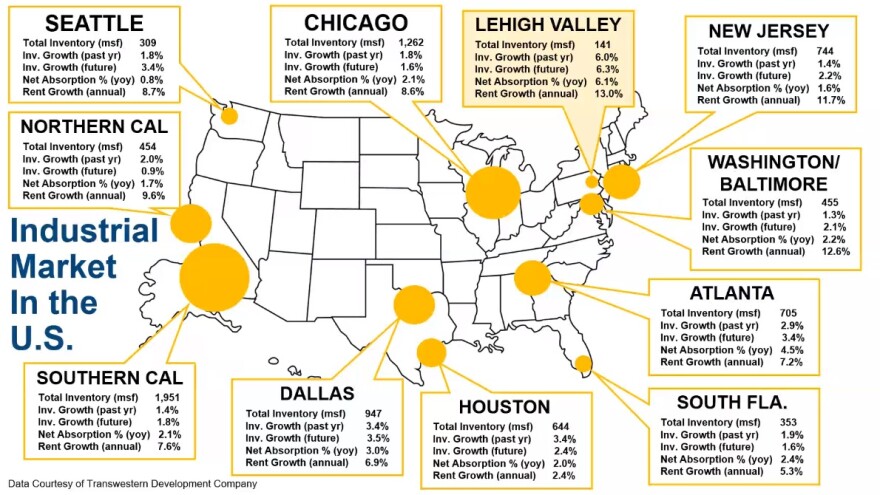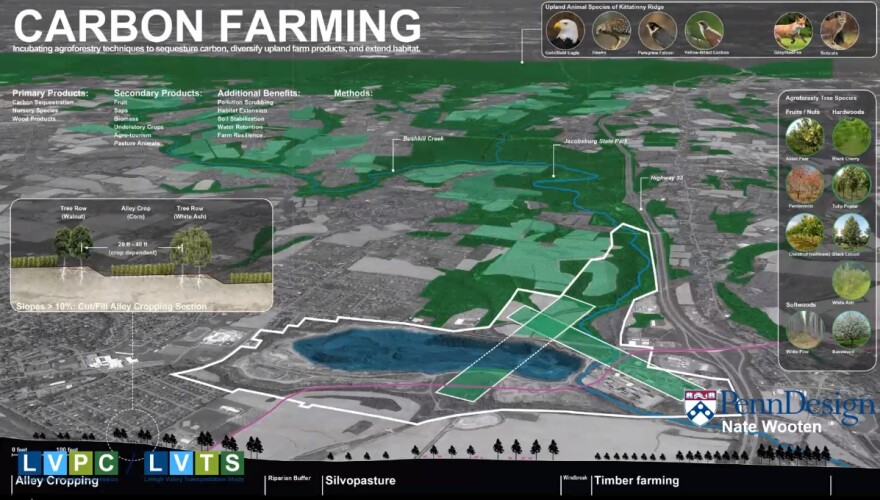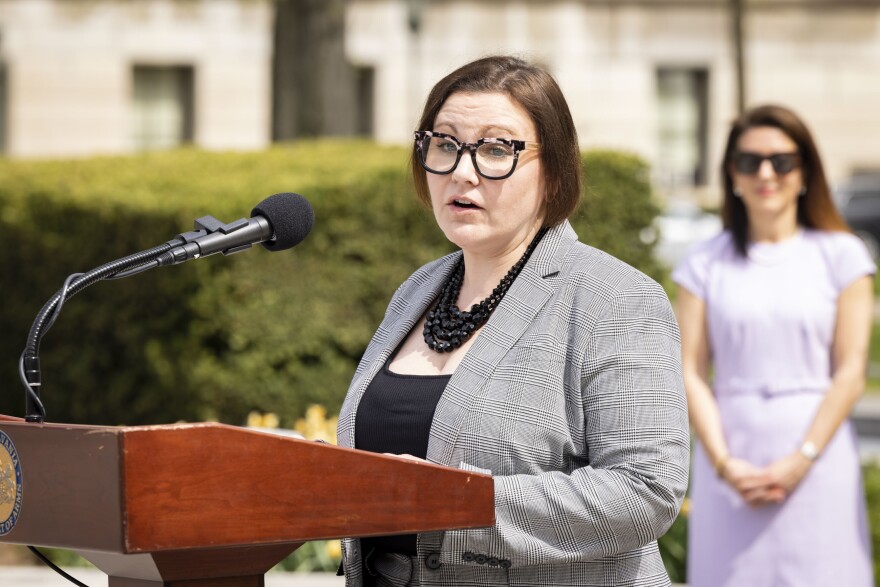- This week marked Pennsylvania's third Commonwealth Sustainability Week
- Becky Bradley, executive director of the Lehigh Valley Planning Commission, spoke during a Friday webinar
- The webinar was focused on local climate action planning
BETHLEHEM, Pa. — The Lehigh Valley is in a time of tremendous change, Becky Bradley said Friday morning, but when it comes to climate and extreme weather, what residents are experiencing is the “new normal.”
“Our charge has always been to plan for the responsible growth, management, development, redevelopment, and preservation of Lehigh and Northampton counties,” said Bradley, executive director of the Lehigh Valley Planning Commission. “But we all know we're in a time of tremendous change. So, we're trying to think through that, and what that means is it relates to climate action, and there's a collective recognition that we're in a new normal.
“So, what does that mean and how does that affect how we think about climate action?”
Bradley was one of three speakers Friday morning in the last webinar of Commonwealth Sustainability Week, which focused on local climate action planning. In its third year, and hosted by the state’s GreenGov Council and Penn State Sustainability, the weeklong event featured daily, free webinars focused on climate change and sustainability efforts statewide.
More than 120 people tuned in for the webinar, "Fostering Resilient Communities — Local Climate Action and Planning." Other speakers included Lindsay A. Byron, an environmental group manager in the energy programs office of the state Department of Environmental Protection, as well as Cathy Tulley, an environmental programs manager with the Southwestern Pennsylvania Commission.
“It takes a lot of great people to get that work done and it's kind of exciting, rejuvenates us anyway, to hear about the great work that's happening across Pennsylvania.”Michael Walsh, deputy secretary of the state Department of Conservation and Natural Resources
“There’s so much to discuss. There's so much happening,” said Michael Walsh, deputy secretary of the state Department of Conservation and Natural Resources, who moderated the panel. “And it takes a lot of great people to get that work done and it's kind of exciting, rejuvenates us anyway, to hear about the great work that's happening across Pennsylvania.”
Earlier this year, the LVPC announced the receipt of a $1 million infusion of federal funds earmarked to create two separate climate action plans over the next four years.
Officials must create a Priority Climate Action Plan, focused on industrial decarbonization, as well as a Comprehensive Climate Action Plan. The former is due March 1, while the latter is expected to be adopted in August 2025, officials said during a recent meeting of the commission’s Environmental Committee.
‘Climate migrants’
The Valley’s population is “exploding,” Bradley said during the webinar, citing migration from metropolitan areas, like New York and Philadelphia, but also internationally.
“We've actually grown a lot, very consistently, since the 1960s, adding between 3,300 to 3,500 and over 4,000 people per year,” she said. “So right now, we're a little under 700,000 people in just the two counties, and we expect to go over 800,000 over the next decades.”
Because of the Valley’s geographical location, it’s “one of the fastest growing corridors in the nation for warehousing and logistics,” she said.

And extreme weather events from climate change helped push the region into holding more warehousing.
“What has really happened since Hurricane Sandy, a climate-related event, is [that] the port of New York and New Jersey was flooded out,” Bradley said. “Our grocery store chains in particular had a lot of food coming in through the port. Right at the port is where it was stored, and with the electricity out for weeks on end, billions of dollars of fresh and frozen goods were spoiled."
“And it's just one example. And so we ended up starting to see some climate migrants from the business sector as well as the population centers in that New York metro.”
The Lehigh Valley’s gross domestic product is more than three states: New Hampshire, Alaska and Wyoming, she said. The region is the 11th largest industrial economy in the entire U.S., with over 141 million square feet of current inventory.
“To put it in a little bit of context … We typically see about one to two, maybe three land uses of regional significance … per month,” she said. “As of 10/3, so the third day of this month, we have 16 land uses of regional significance and all but one of them are for industrial facilities.”
‘It's part visioning, it's part doing’
With the increased population and growth of warehousing, the Valley’s planning officials have had to think “way outside the box,” Bradley said.
“We operate under a couple of key tenants,” she said. “One of them is that we have to think about what we're doing today and how that affects what we plan to do tomorrow. We've had to think way outside of the box because of just the massive amount of growth that we're experiencing.”
The focus has been on decarbonization and diversifying transportation, she said, as well as climate justice and equity.
“We really have been working very closely with a variety of communities, and staying close with leaders in those communities to be able to facilitate discussions, especially around climate vulnerabilities,” she said. “Because oftentimes, people who are poor or maybe in an equity community because of whatever reason, are living in our floodplains, which are now growing, honestly.”
Bradley cited the Riverside Drive project, a $57 million effort to turn a former railroad bed into miles of road and trails between Allentown and Whitehall, as one of the projects promoting equity. That gap, she said, is “our largest gap in our biggest equity community.”
“By 2029, we will have closed that gap, protected almost two miles of the Lehigh River waterfront, and reconnected our community that has the greatest number of equity issues back to the Lehigh River,” she said.
An upcoming project will look at carbon farming, a method of agriculture that can be applied to communities and roadways to trap carbon dioxide emissions from entering the atmosphere.

“Our priority Climate Action Plan for transportation is to look at how we can leverage our public rights of way along Route 22, I-78, and State Route 33 to utilize those lands as places that we can create a giant green infrastructure corridor that will help everything, including carbon reduction from vehicle emissions, to supporting our huge migratory population of predatory birds that are coming through and mass right now,” she said.
“ … It'll help us with pollination and support our agricultural economy, as well as make a four-season, beautiful transportation experience and connect that built environment and that industrial environment with our natural environment.
“We're hoping just to start to achieve these things. So it's part visioning, it's part doing and it's part working through the issues that we have in front of us today to achieve these more global outcomes.”


